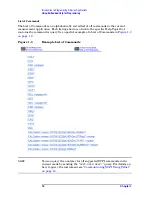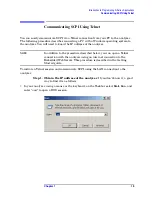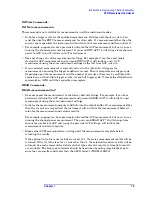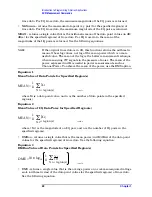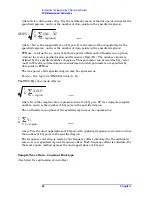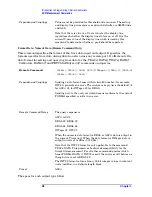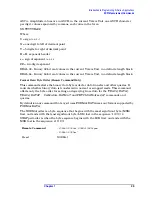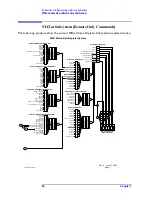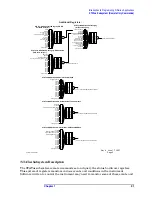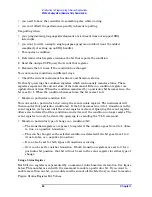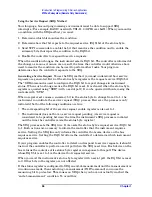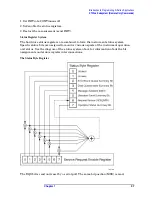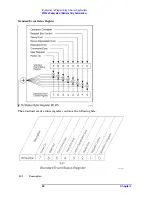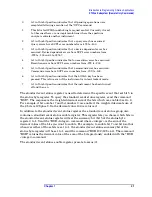
26
Chapter 1
Introduction to Programming X-Series Applications
SCPI Measurement Commands
you want returned. It will ignore any additional items beyond that number. You can use
the Start offset and the Repeat limit to pick out exactly what part of the data you want
to use. The default value is all the data.
Calculate peaks of trace data (Remote Command Only)
Returns a list of all the peaks for the currently selected measurement and sub-opcode [n].
The peaks must meet the requirements of the peak threshold and excursion values.
n = any valid sub-opcode for the current measurement. See the MEASure:<measurement>
command description of your specific measurement for information on the data that can be
returned.
The command can only be used with specific sub-opcodes with measurement results that
are trace data. Both real and complex traces can be searched, but complex traces are
converted to magnitude in dBm. In many measurements the sub-opcode n=0, is the raw
trace data which cannot be searched for peaks. And Sub-opcode n=1, is often calculated
results values which also cannot be searched for peaks.
This command uses the data setting specified by the FORMat:BORDer and
FORMat:DATA commands and can return real or ASCII data. If the format is set to
INT,32, it returns REAL,32 data.
The command has four types of parameters:
• Threshold (in dBm)
• Excursion (in dB)
• Sorting order (amplitude, frequency, time)
• Optional in some measurements: Display line use (all, > display line, < display line)
Remote Command
:CALCulate:DATA[1]|2|3|4|5|6:PEAKs?
<real>,<real>[,AMPLitude|FREQuency|TIME[,ALL|GTDLine|LT
DLine]]
Remote Command
For Swept SA measurement:
:CALCulate:DATA[1]|2|3|4|5|6:PEAKs?
<threshold>,<excursion>[,AMPLitude|FREQuency|TIME[,ALL|
GTDLine|LTDLine]]
For most other measurements:
:CALCulate:DATA[1]|2|3|4|5|6:PEAKs?
<threshold>,<excursion>[,AMPLitude|FREQuency|TIME]

